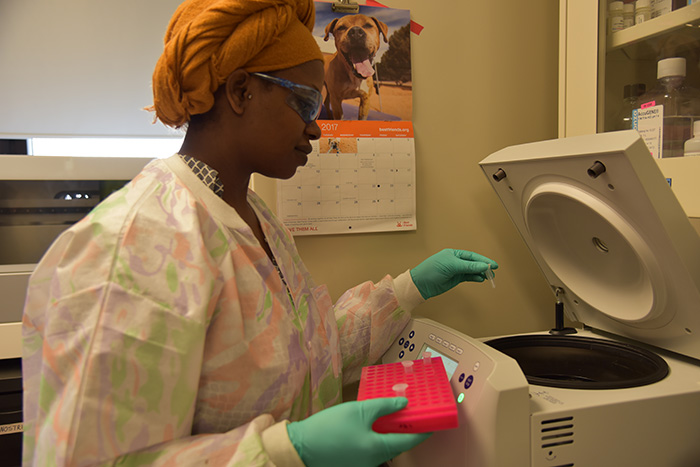USACEHR Scientists Hope to Unlock Clues to Bone Healing through Experiment in Space

Scientists at the U.S. Army Center for Environmental Health Research are hoping to determine how bones will heal in microgravity with an experiment that launched into space aboard SpaceX to the International Space Station in February and returned to earth aboard SpaceX's Dragon cargo craft in March.
Through the Department of Defense Space Test Program, the USACEHR Integrative Systems Biology group and their partners at the Indiana University School of Medicine collaborated with NASA and the Center for the Advancement of Science in Space to have the experiment conducted by scientists aboard the International Space Station for one month.
The primary goal of this astronomical research project is to translate new discoveries in bone regeneration for osteoporosis, fracture healing and other bone disorders. Extremity injury accounted for up to 79 percent of reported trauma cases from theater between 2002 and 2009. Improvised explosive devices and high-energy explosions cause a severe extremity trauma and can be so severe that amputation is the only treatment.
"We're trying to understand what happens in the body as the bones start healing," said Dr. Rasha Hammamieh, director of Integrative Systems Biology at the USACEHR and the study's lead scientist. "Understanding of bone healing is a mission critical subject for both the military and astronaut community."
The research carried out systems biology studies to understand the physiological events associated with wound healing mechanisms subjected to gravitational forces and to identify potential signatures to predict the healing outcomes. It is hopeful that the results will provide a new understanding of the biological reasons behind healing mechanisms, efficacy of the osteoinductive drugs at stressed conditions and their susceptibility to gravity.
According to Hammamieh, 40 mice were segregated into a specially-designed habitat under different treatment regimens for one month aboard the International Space Station. While in space, the mice were cared for and monitored by astronauts while the USACEHR and University of Indiana School of Medicine team monitored their progress daily via video. The mice were euthanized in space and were shipped back to Earth for comparison with a control group that remained on the ground.
"We speculate that in the long term, this knowledge may lead us to identifying the novel biomarkers of bone regeneration, bone loss and bone healing," said Hammamieh. "Consequently, the astronauts' health care program will be more knowledge driven, personalized and efficient, and the lessons learned could also be applied to helping injured Soldiers recover from catastrophic bone injuries."














